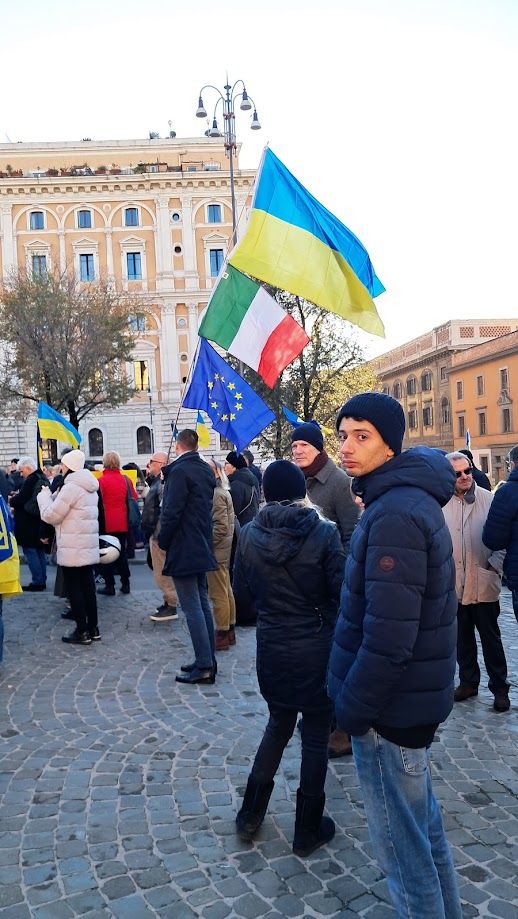

" ... what thrills me about trains is not their size or their equipment but the fact that they are moving, that they embody a connection between underneath places."
Marianne Wiggins
René Groebli b 1927 📷
Rail Magic Series
#PhotographyIsArt
🚂🚃🚃#TrainLovers🚃🚃🚂
Good evening dear Brindusa 🙏
My mother died over 30 years ago, and there isn't a day that goes by that I don't talk to her and miss her terribly❤️🩹

Good evening dear Brindusa 🙏
My mother died over 30 years ago, and there isn't a day that goes by that I don't talk to her and miss her terribly❤️🩹
a este poema.
Territorio de nadie era esto antes de que tú llegaras
y nadie lo ha pisado más que yo hasta que tú has venido.
Aquí el cielo es tangible No hay metáfora.
La cúpula sencilla de nosotros dos y el fuego.
Buenos días,
compañeros del alma,
compañeros...

a este poema.
Territorio de nadie era esto antes de que tú llegaras
y nadie lo ha pisado más que yo hasta que tú has venido.
Aquí el cielo es tangible No hay metáfora.
La cúpula sencilla de nosotros dos y el fuego.
Buenos días,
compañeros del alma,
compañeros...
ich hab zeit

ich hab zeit
Melodien der Gregorianik, Werke der englischen und spanischen Renaissance, Musik von Johann Sebastian Bach - Tom Daun, Harfe
Evangelische Kirche Solingen-Wald, 23.11.2025 👍🏻
#ClassicalMusic #MusicSky 📷

Melodien der Gregorianik, Werke der englischen und spanischen Renaissance, Musik von Johann Sebastian Bach - Tom Daun, Harfe
Evangelische Kirche Solingen-Wald, 23.11.2025 👍🏻
#ClassicalMusic #MusicSky 📷
Adolph Wegelin, * 24.11.1810 in Kleve; † 18.1.1881 in Köln, war ein deutscher Architektur- und Landschaftsmaler der Düsseldorfer Schule 🎨 🇩🇪
Das Kloster Maria Laach, vor 1881 🖼️
#OTD #ArtHistory #LandscapePainting #Architecture #BskyArt #watercolor

Adolph Wegelin, * 24.11.1810 in Kleve; † 18.1.1881 in Köln, war ein deutscher Architektur- und Landschaftsmaler der Düsseldorfer Schule 🎨 🇩🇪
Das Kloster Maria Laach, vor 1881 🖼️
#OTD #ArtHistory #LandscapePainting #Architecture #BskyArt #watercolor
Maurice Denis * 25.11.1870 in Granville; † 13.11.1943 in Saint-Germain-en-Laye, war ein französischer Maler des Symbolismus und Mitbegründer der Künstlergruppe Les Nabis 🎨 🇫🇷
Portrait von Elisabeth Denis, 1922 🖼️
Musée Fabre 🏛️
#OTD #ArtHistory #PortraitPainting #BskyArt #History #Museum

Maurice Denis * 25.11.1870 in Granville; † 13.11.1943 in Saint-Germain-en-Laye, war ein französischer Maler des Symbolismus und Mitbegründer der Künstlergruppe Les Nabis 🎨 🇫🇷
Portrait von Elisabeth Denis, 1922 🖼️
Musée Fabre 🏛️
#OTD #ArtHistory #PortraitPainting #BskyArt #History #Museum
Sid Kirkham 🖌️

Sid Kirkham 🖌️


Buenos dias Agustín 🌲🙋☕🙏

Buenos dias Agustín 🌲🙋☕🙏
"We love our mother unknowingly, and only realize how deep-rooted that love is at the ultimate separation."
Guy de Maupassant
Maurice Denis ( 1870-1943 ) The Crown of Daisies 1905

"We love our mother unknowingly, and only realize how deep-rooted that love is at the ultimate separation."
Guy de Maupassant
Maurice Denis ( 1870-1943 ) The Crown of Daisies 1905
Dici che tu la voce non la alzi
e che le mani nemmeno
non sai da dove
far uscire la violenza
Non c’è bisogno di un odio speciale
la morte arriverà
banale
naturale
Mi sbranerai con indifferenza
Anna Segre
La distruzione dell’amore
©️kseniyavashchenko

Dici che tu la voce non la alzi
e che le mani nemmeno
non sai da dove
far uscire la violenza
Non c’è bisogno di un odio speciale
la morte arriverà
banale
naturale
Mi sbranerai con indifferenza
Anna Segre
La distruzione dell’amore
©️kseniyavashchenko
Salon des Moulins
Have a peaceful day and new week 🙏🍁🕊️☔☕

Salon des Moulins
Have a peaceful day and new week 🙏🍁🕊️☔☕

Henri de Toulouse-Lautrec Ball at Moulin Rouge (detail) 1889
#NatiOggi
Moulin Rouge/Cancan/Offenbach
youtu.be/Y7vV9xwgtKg?...

Henri de Toulouse-Lautrec Ball at Moulin Rouge (detail) 1889
#NatiOggi
Moulin Rouge/Cancan/Offenbach
youtu.be/Y7vV9xwgtKg?...
Prints available
#Koffiart37 #koffiimageworks #koffiart #artistkoffi #visdev #digitalart #print

Prints available
#Koffiart37 #koffiimageworks #koffiart #artistkoffi #visdev #digitalart #print

Théo van Rysselberghe, * 23.11.1862 in Gent; † 13.12.1926 in Saint-Clair bei Le Lavandou, Frankreich, war ein flämischer Maler des Pointillismus 🎨 🇧🇪
Die Regatta, 1892 🖼️
#OTD #ArtHistory #LandscapePainting #Pointilism #BskyArt #History #seascape

Théo van Rysselberghe, * 23.11.1862 in Gent; † 13.12.1926 in Saint-Clair bei Le Lavandou, Frankreich, war ein flämischer Maler des Pointillismus 🎨 🇧🇪
Die Regatta, 1892 🖼️
#OTD #ArtHistory #LandscapePainting #Pointilism #BskyArt #History #seascape












